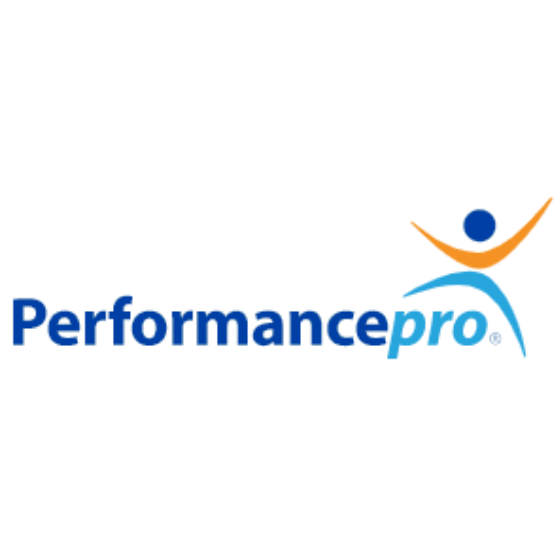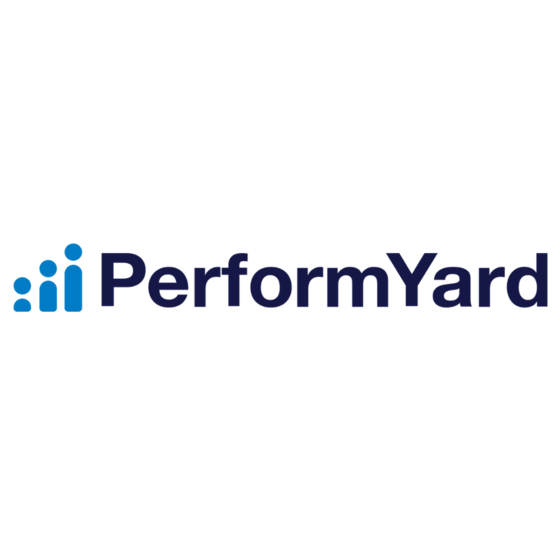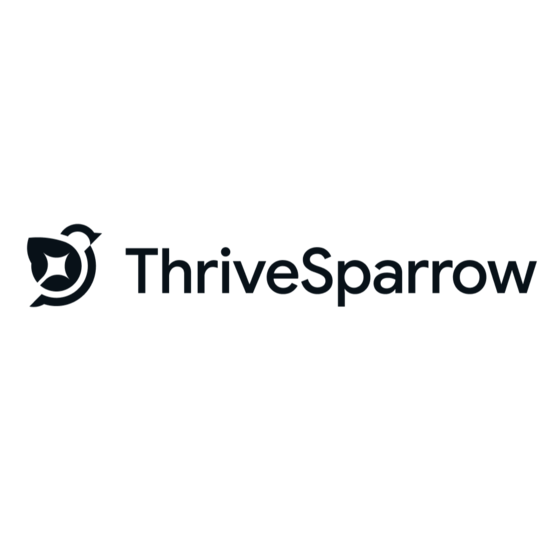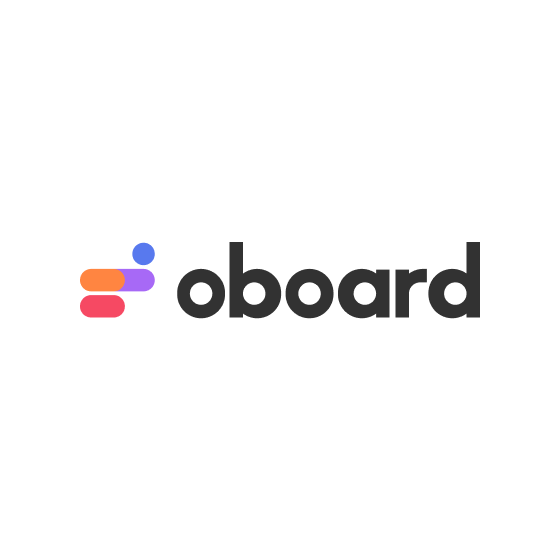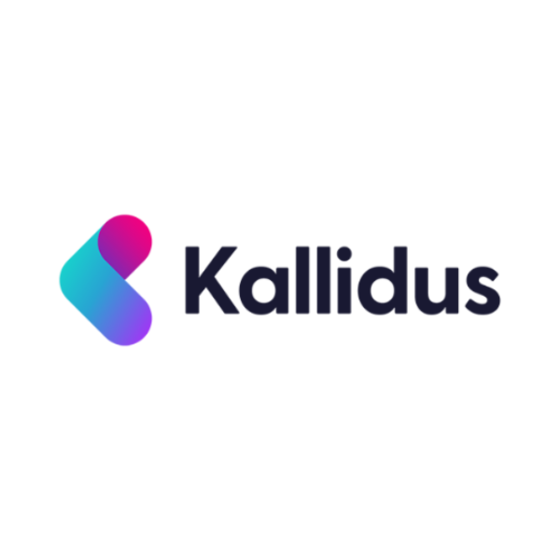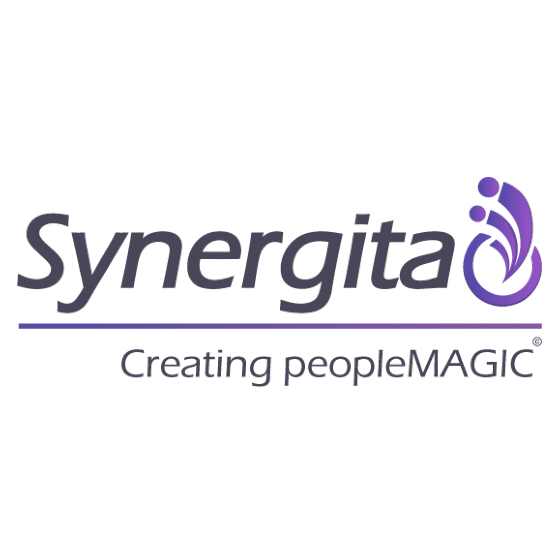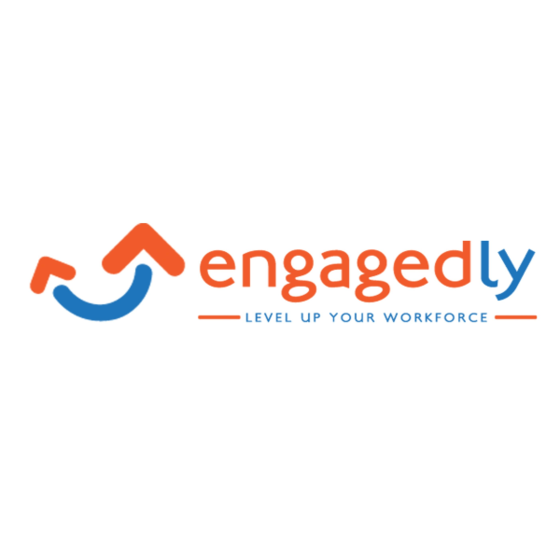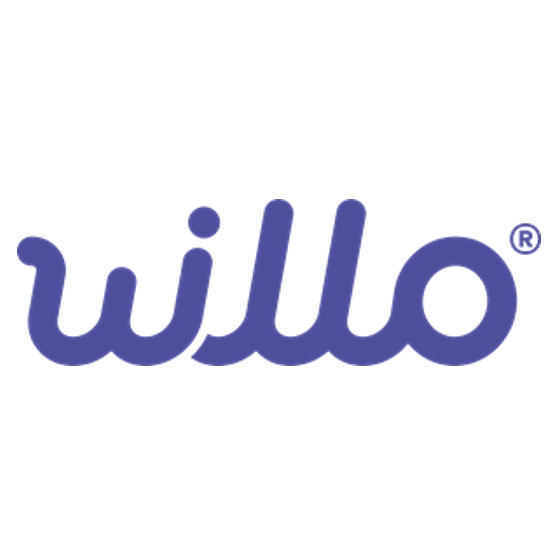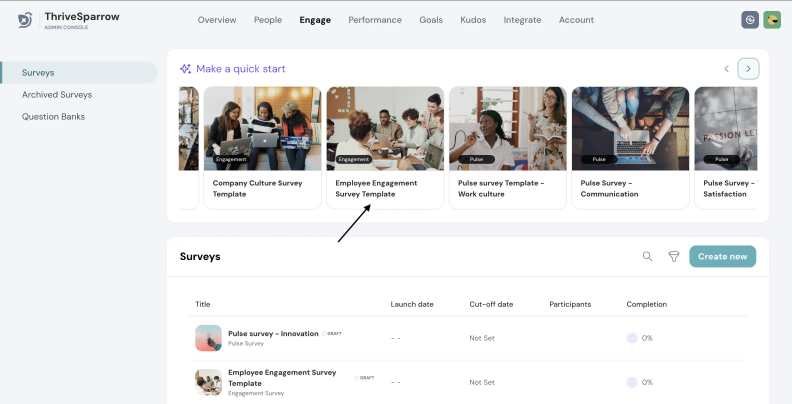10 Best Goal Setting Software Shortlist
Here's my pick of the 10 best software from the 20 tools reviewed.
Get free help from our HR software advisors to find your match.
With so many different goal-setting software solutions available, figuring out which is right for your team is tough. You know you want software to help you add structure to your goal development process to help your team set, track, and achieve their goals, but you need to figure out which software is best. In this article, I'll help you make your choice easy by sharing my insights on the best goal-setting software for organizations and workplace teams.
Why Trust Our Software Reviews
We've been testing and reviewing HR software since 2019. As HR professionals ourselves, we know how critical and difficult it is to make the right decision when selecting software.
We invest in deep research to help our audience make better software purchasing decisions. We've tested more than 2,000 tools for different HR use cases and written over 1,000 comprehensive software reviews. Learn how we stay transparent, and take a look at our software review methodology.
Best Goal Setting Software: Pricing Comparison Chart
This comparison chart summarizes pricing details for my top goal setting software selections to help you find the best software for your budget and business needs.
| Tool | Best For | Trial Info | Price | ||
|---|---|---|---|---|---|
| 1 | Best for AI-powered career progression frameworks with goal setting | Free trial + demo available | From $29/month | Website | |
| 2 | Best for tracking goals within the performance appraisal process | Free demo available | From $2 to $7/employee/month | Website | |
| 3 | Best for simple AI-assisted goal setting | Free trial available | From $5/seat/month | Website | |
| 4 | Best combined performance and goal management software with continuous feedback features | Free demo available | From $5 to $10/user/month | Website | |
| 5 | Best for real-time goal tracking with dynamic dashboards | 14-day free trial | From $2/employee/month | Website | |
| 6 | Best for adding OKR goals to your Jira environment | Free demo available | Pricing upon request | Website | |
| 7 | Best for its collaborative strategic planning tools | Free plan + 14-day free trial available | From $18/user/month | Website | |
| 8 | Best goal setting software for centralizing employee performance management | Free demo available | Pricing upon request | Website | |
| 9 | Best for its goal blending for collective commitment | 7-day free trial | From $5/employee/month (billed annually) | Website | |
| 10 | Employee development platform well-suited for team member goal alignment and employee engagement. | Free demo available | From $6/employee/month | Website |
-

Rippling
Visit WebsiteThis is an aggregated rating for this tool including ratings from Crozdesk users and ratings from other sites.4.8 -

Willo
Visit WebsiteThis is an aggregated rating for this tool including ratings from Crozdesk users and ratings from other sites.4.8 -

edays
Visit WebsiteThis is an aggregated rating for this tool including ratings from Crozdesk users and ratings from other sites.4.3
Best Goal Setting Software Reviews
Here are my detailed summaries of the best goal setting software that made it into my top 10 list, including notes on why I picked them. Each review offers a detailed look at the key features, integrations, and ideal use cases of each system to help you find the best tool for you.
Deel
Best for AI-powered career progression frameworks with goal setting
Deel Engage is a comprehensive platform designed to enhance employee development and performance management within organizations. It integrates goal setting, learning management, performance reviews, and career progression into one cohesive system.
Why I picked Deel: As a goal-setting software, I like that Deel offers robust goal alignment and OKR capabilities. The platform enables teams to collaborate on setting clear, measurable goals that align with the overall company objectives. Furthermore, the integration of performance reviews and growth plans in one place provides a complete picture of employee progress and ensures that goals are continuously monitored and adjusted as needed.
Key features include Deel's competency-based career progression frameworks, which provide employees with clear paths for growth. This feature is supported by its AI-powered creation tools, allowing for the rapid development of detailed career pathing frameworks. Additionally, the centralized competency library ensures that all skills and levels are managed in one place, making it easy to apply them to feedback reviews and identify the right courses for development. The platform’s performance analytics, including bar and radar charts, also offer deep insights into goal progress and employee potential.
Integrations include various HR systems, like BambooHR, Personio, Workday, and Slack (with plugins like PTO management, Kudos, Referrals, and Org Charts).
Best for tracking goals within the performance appraisal process
Performance Pro is a performance management application for small to mid-sized organizations that integrates performance management with compensation management strategies and tools. Their goal-tracking capabilities are included in their performance appraisal workflow, helping managers monitor goal progress during performance reviews.
Why I picked Performance Pro: I included Performance Pro in this list because of their focus on implementing HR best practices throughout the performance review process. I also appreciate the link between goals, performance, and merit-based salary increases which helps motivate employees to reach and exceed their goals.
Key features include tools for setting goals, conducting performance reviews, and evaluating competencies, including 360-degree feedback and development planning. The platform also provides a comprehensive library of competencies and job descriptions, along with capabilities for tracking and reporting on performance metrics.
An integration is available with Compease to help with merit-based compensation increases and planning.
Tability is a versatile AI-driven platform designed for teams and organizations seeking to enhance their goal-setting and tracking processes, particularly those utilizing objectives and key results (OKRs) and key performance indicators (KPIs).
Why I picked Tability: Tability offers AI-assisted goal setting, which facilitates the creation and tracking of SMART goals and OKRs. This ensures goals are specific, measurable, and aligned with your business objectives, saving time and boosting the effectiveness of goal-setting processes. The software’s goal tracking and on-demand reporting also provide ongoing insights into progress and performance, helping maintain focus and accountability across your teams. The platform also offers automatic progress visuals and real-time updates, giving you a clear view of dependencies and achievements.
Key features include daily check-ins to help maintain focus on goals and ensure consistent alignment with team objectives. You can also create personalized dashboards to monitor specific metrics and objectives, providing a tailored view of progress. Additionally, the platform offers the option to connect specific tasks to outcomes, which further promotes alignment with individual, team, and organizational objectives.
Integrations include Slack, Microsoft Teams, OpenAI, Asana, Jira, Trello, ClickUp, Confluence, Notion, Okta, Azure Directory, Freshdesk, Zendesk, Intercom, Airtable, PagerDuty, Typeform, Hubspot, Mailchimp, Stripe, and Salesforce.
Pros and cons
Pros:
- Aligns goals with task management
- Provides real-time progress tracking
- AI-powered goal suggestions
Cons:
- Not ideal for those who require complex goal management
- Reliance on AI-driven processes might not suit every team
Best combined performance and goal management software with continuous feedback features
PerformYard’s performance management software integrates goal tracking with performance reviews, check-ins, and continuous feedback to create a holistic employee development experience.
Why I picked PerformYard: Their cascadable goal feature makes it possible to link goals from top-level company objectives and OKRs down to individual employee or shared team goals, broken down into more manageable parts. To ensure all elements of employee progression are transparent, their goal analytics dashboard produces clean charts and stats that are available to management and executives, as well as the individual employees themselves.
Their system is fully customizable, giving you the flexibility to provide feedback to your employees or check in on their goals whenever it works for you, including daily, weekly, monthly, quarterly, or annually. You can also customize the timing of your performance review cycle too, as well as the forms and question templates that work best for your organization.
PerformYard also helps managers celebrate goal achievements either privately or publicly so all team members can witness employee progression firsthand. On top of all that, co-workers can also provide feedback to other colleagues directly too through their 360-degree feedback feature.
Integrations are available with many commonly used software systems, including, ADP, BambooHR, Gusto, Microsoft Teams, Paycom, Paylocity, Rippling, Slack, UKG Pro, and Workday.
Best for real-time goal tracking with dynamic dashboards
ThriveSparrow is an AI-powered employee success platform that focuses on boosting workplace performance and engagement by facilitating automated peer recognition and rewards.
Why I picked ThriveSparrow: Its goal-tracking system efficiently monitors Objectives and Key Results (OKRs), ensuring transparency and accountability. With real-time monitoring through dynamic dashboards, you can gain instant insights and progress snapshots, allowing your team to adapt swiftly to changing priorities and meet deadlines effectively.
Key features include goal collaboration and feedback for better team communication and alignment. This feature is complemented by ThriveSparrow's performance reviews, which include comprehensive feedback to identify talent gaps and foster high-performing teams. You can also create action plans based on performance feedback to address engagement issues.
Integrations include Slack, Microsoft Teams, Google Workspace, Bob, UKG, Gusto, and Square
New Product Updates from ThriveSparrow
New Survey-Builder
ThriveSparrow's updated survey-builder allows HR teams to create and distribute engagement surveys quickly, with guided question selection, branding, and distribution options. More details at ThriveSparrow Blog.
OKR Board for Jira by Oboard is a goal-setting software that integrates directly with your Jira environment.
Why I picked OKR Board for Jira: You can use the platform to establish your Objectives and Key Results (OKRs), and then connect them with your epics, issues, and projects right in Jira. It's a great way to keep your projects and initiatives aligned with your broader goals, and keep goals top of mind in project planning through execution.
The OKR builder offers a hierarchy that's both flexible and customizable. You can set up your goals in whatever way makes the most sense for your business or team, and create multiple levels of cascading goals. You can also group OKRs together as they relate to specific initiatives, departments, timelines, or teams. The software has powerful reporting and analytics capabilities as well, so you can track your progress and identify areas for improvement.
Other features included in the platform are roadmaps, custom weights and levels, and private workspaces.
The native integrations available include Jira, Confluence, and Salesforce, and the REST API allows you to build integrations with other tools and systems if needed.
Quantive Results is a strategy execution platform designed to help businesses align their data and personnel around a common mission and clear goals.
Why I picked Quantive Results: This software offers a range of features that support your strategy planning, cross-departmental alignment, and goal setting. There's a focus on collaboration in strategic planning, with tools like whiteboards and retrospective templates to help your leadership team work together towards a plan.
When it comes to goal setting specifically, both OKR and KPI tools are included in the platform. You can set cascading goals, assign KPIs to specific teams or employees, and link related goals to one another. The software also has AI tools that help you set your KPIs and suggest relationships between OKRs.
Key features include pre-built OKR templates, multi-level goal setting, multiple key result types, tags, OKR and task alignment, automated notifications, advanced access permissions, and reporting and analytics tools.
Integrations include Slack, Microsoft Teams, Asana, Miro, Jira, SurveySparrow, BambooHR, Workable, Humaans, and Rally, among others. You can also access additional integrations with a paid Zapier account.
Best goal setting software for centralizing employee performance management
Kallidus Perform is a cloud-based performance management software that helps managers keep their teams on track. It provides a central place for storing goals, tracking progress, and sharing feedback.
The software is designed to improve communication and collaboration within teams. It provides employees with a clear overview of their goals and objectives and allows managers to set and monitor progress against these. The software offers various tools for communicating goals and monitoring progress, such as a goal-setting wizard, reports, and dashboards. Its manager dashboard gives managers a birds-eye view of their team's performance.
You can gather informal employee feedback through employee recognition and goal-setting features. With employee recognition, users can give colleagues kudos for a job well done, which helps boost morale and keep employees engaged. Goal setting helps keep employees on track by providing them with specific goals to work towards. And the software's customizability facilitates the integration of the software with existing systems within an organization, helping optimize workflows and improve efficiency.
Pricing for Kallidus Perform is available upon request.
Synergita is an OKR & employee performance management system with SMART goal management functionalities to help keep teams on track to achieving their goals.
Why I picked Synergita: Using this solution allows you to monitor the status of different goals to monitor anyone's work progress. You will be able to set, measure, track, and manage employee goals to give accountability and visibility. Additionally, Its OKR framework is used to establish common objectives and Link Goals to keep employees aligned with one goal to have a clear view of the team’s common goals.
This software uses an all-in-one dashboard which can be used to access individual dashboards containing people's goals, performance ratings, and a celebrations section. Your team can manage goals on the go to stay engaged with their colleagues, even while away from the office. Any changes will be reflected in each employee’s dashboard. Using Synergita helps keep teams on the same page regarding their common goals, and you can use analytics to review how the team performed regarding said goals.
You can check in on the goals and provide feedback to your team members using the same platform and continuously engage with them. This can help increase trust and collaboration between you and your team. Additionally, team members can use the peer appreciation feature to congratulate one another, and team members will be able to see updates on certain awards, like the “Employee of the Month” award, to celebrate each other’s successes.
Integrations are available with HRIS software solutions, like Altera Payroll, ADP Workforce, Charlie HR, Gusto, HR Cloud, Humaans, Workday, and Sage HR.
Engagedly
Employee development platform well-suited for team member goal alignment and employee engagement.
Engagedly is a people development platform focused on three main pillars: performance management, people engagement and employee development. Their software includes advanced features to support internal talent mobility, goals and OKR alignment across departments, 360-degree and multi-rater peer feedback, mentoring programs, engagement surveys, and employee recognition and rewards.
Their goals and OKRs module helps improve organizational goal alignment by linking employee goals to top-level business goals, which are reviewed on a regular basis. Their advanced analytics also allow you to judge the effectiveness of your goal alignment through statistics for individuals, teams or the entire organization.
Engagedly integrates with ADP Marketplace, BambooHR, BizLibrary, Google SSO, Gusto, Namely, Okta, Paylocity, Personio, Slack, and Traliant.
Pricing for Engagedly starts at $6/employee/month. They also offer a free demo through their website.
Other Goal Setting Software
Here are a few more goal tracking apps that didn’t make it into my top 10 list but are still worthwhile options:
- Knovos Cascade
Strategic project management software with tracking for goals, KPIs and OKRs.
- GoalsOnTrack
Flexible and easy-to-use goal setting software with tools to support multi-level goals, habit tracking, and progress visualization
- Ally.io
Modern OKR software with a useful Objective Explorer and a two-way Slack integration
- Goalscape
Dynamic goal visualization tool, well-suited for large team goals and industries with tight security restrictions
- Leapsome
For linking goals & OKRs with performance management and employee development
- ClickUp
Popular productivity platform for goal setting, with linked tasks and targets and a weekly scorecard feature
- Lattice
Goal-tracking software for improving strategic alignment across all levels
- ClearCompany
Talent management platform with integrated goal-management features
- monday.com
Customizable workflow visualization tool with pre-built templates and an embedded goal widget
- Peoplebox.ai
Goal setting OKR software for enterprises
Related HR Software Reviews
If you still haven't found what you're looking for here, check out these other related tools that we've tested and evaluated:
- HR Software
- Payroll Software
- Recruiting Software
- Employer of Record Services
- Applicant Tracking Systems
- Workforce Management Software
Selection Criteria for Goal-Setting Software
Selecting the right goal-setting platform requires a deep dive into functionality and specific use cases. Based on my extensive experience and research, I've honed in on the following criteria that best encompass a thorough, consistent, and fair evaluation. The process isn't just about ticking boxes; it involves evaluating how each platform facilitates setting, managing, tracking, and achieving goals.
Here's a breakdown of the criteria I use to assess goal-setting platforms, emphasizing the essential features that such software typically offers:
Core Goal Setting Software Functionalities (25% of total score): To be considered for inclusion in this list, each solution had to fulfill these common use cases first:
- Goal hierarchy creation, allowing teams to align individual objectives with broader organizational goals.
- Progress tracking to visualize advancement towards milestones and final objectives.
- Collaboration features that enable real-time updates, feedback, and adjustments among team members.
- Integration capabilities with other productivity and management tools, ensuring seamless workflows.
- Reporting and analytics for evaluating performance data and informing future goal-setting strategies.
Additional Standout Features (25% of total score): To help me find the best software out of numerous available options, I also kept a keen eye out for unique features, including the following:
- Innovative task prioritization systems that go beyond simple lists, such as visual matrices or AI-recommended priorities.
- Advanced collaboration tools, like integrated video calls or real-time document editing, that foster a more connected team environment.
- Customizable dashboards that provide at-a-glance insights tailored to different roles within the organization.
- Unique motivational tools, such as gamification elements, to keep teams engaged and focused.
Usability (10% of total score): To evaluate the usability of each system, I considered the following:
- Intuitive design that doesn't sacrifice depth for simplicity, enabling both new and experienced users to find value quickly.
- Clean, visually appealing interfaces that make navigation and task management a seamless experience.
Onboarding (10% of total score): To get a sense of each software provider's customer onboarding process, I considered the following factors:
- Comprehensive training resources, including videos, templates, and interactive tours, to reduce the learning curve.
- Active community forums or chatbots that provide immediate assistance and foster user engagement from the outset.
Customer Support (10% of total score): To evaluate the level of customer support each vendor offered, I considered the following:
- Availability of multi-channel support, including live chat, email, and phone, ensuring help is always on hand.
- Speed and quality of responses, which reflect the company's commitment to its users' success.
Value for Price (10% of total score): To gauge the value of each software, I considered the following factors:
- Transparent pricing models that offer clear value propositions for different sizes and types of organizations.
- Flexible plans that allow for scaling up or down based on current needs, ensuring companies only pay for what they use.
Customer Reviews (10% of total score): Evaluating customer reviews is the final element of my selection process, which helps me understand how well a product performs in the hands of real users. Here are the factors I considered:
- Consistent praise for user experience, highlighting platforms that deliver a frictionless and engaging environment.
- Testimonials that specifically mention how the platform has helped teams achieve their goals, indicating real-world effectiveness.
Using this assessment framework helped me identify the goal-setting software that goes beyond basic requirements to offer additional value through unique features, intuitive usability, smooth onboarding, effective support, and overall value for price.
How to Choose a Goal-Setting Software
As you work through your own unique tool selection process, keep the following points in mind:
- What problem are you trying to solve? Start by identifying the challenges you're trying to overcome. This will help you clarify the features and functionality the goal-setting software needs to provide.
- Who will need to use it? To evaluate cost and requirements, consider who will use the tool and how many licenses you'll need. For goal-setting software, you'll likely want employee-level access for your entire workforce, with special access for your HR administrators and managers. Once that's clear, it's also useful to rank the needs of your different users to identify the key priorities for your power users, managers, and employees, to ensure they're all met.
- What other tools it needs to work with? Clarify what tools you're replacing, what tools are staying, and the tools you'll need to integrate with, such as performance management software, learning management systems, or feedback collection tools. You'll need to decide if the tools will need to integrate together, or alternatively, if you can replace multiple tools with an all-in-one goal-setting software.
- What outcomes are important? Review the capabilities you want to gain or improve, and how you will measure success. For example, you may want a tool to standardize portions of the employee goal-setting process, so everyone follows the same structure. You could compare tool features until you’re blue in the face but if you aren’t thinking about the outcomes you want to achieve, you could waste a lot of valuable time.
- How it would work within your organization? Consider the tool selection alongside your existing workflows and systems. Evaluate what's working well, and any problem areas that need to be addressed.
Remember every business is different — don’t assume that a goal-setting system will work for your organization just because it's popular.
Trends in Goal-Setting Software for 2025
Goal-setting software continues to transform to meet the evolving needs of HR professionals and organizations striving for enhanced productivity and strategic alignment. Through a detailed review of product updates, press releases, and release logs from the leading and most innovative tools in the market, several key trends have emerged. Here's what I'm seeing:
- Gamification Elements: To boost engagement and motivation, gamification has become a more prominent feature. Leaderboards, badges, and rewards for achieving milestones make goal attainment more rewarding and visually appealing. These features cater to the challenge of keeping team members motivated over the long term.
- AI-Driven Insights and Recommendations: A novel trend is the incorporation of AI to offer insights and goal recommendations. By analyzing performance data, these tools can suggest adjustments to goals or identify areas where additional resources might be needed, offering a proactive approach to goal management.
- Real-Time Collaboration and Feedback: The ability for teams to collaborate in real-time, share feedback, and adjust goals has become increasingly important. This feature responds to the need for agile goal management that can adapt to changing priorities and conditions.
- Automated, Simplified Reporting Tools: While reporting remains critical, there's a shift away from complex, customizable reporting tools towards more automated, straightforward insights. This change reflects a preference for simplicity and immediate understanding over in-depth, manual analysis.
These trends highlight an increased focus on automation and improving user engagement. As organizations continue to navigate the complexities of modern work environments, these tools play a pivotal role in ensuring teams remain aligned, motivated, and productive.
What is Goal-Setting Software?
Goal-setting software is a tool that helps users set, manage, and achieve specific goals. You can use it to organize your objectives, prioritize your key tasks, and boost your team's productivity. Goal-setting software combines task management with objective tracking and visualization aids that help everyone on your team see exactly how close they are to achieving each goal. Other features include automatic deadline reminders, individual or team goal assignees, collaboration tools, and progress reports.
Using goal-setting software offers numerous benefits to organizational teams, including an increased focus on the most important tasks, increased accountability and transparency, and improved team-based work distribution. It can improve your organization's strategic alignment at all levels, and act as a catalyst that brings co-workers together to achieve shared goals. Many systems also include engagement features to keep staff motivation high at all times.
Features of Goal-Setting Software
Effective goal-setting software plays a crucial role in organizing objectives, prioritizing tasks, and enhancing team productivity. Selecting one with the right feature set makes a world of difference in user adoption and ultimate success. Here are the most important features I look for in goal-setting software:
- User-Friendly Interface: A straightforward and intuitive design makes it easy for all team members to use the software, ensuring everyone is on the same page and engaged in reaching common objectives.
- Goal Tracking and Progress Updates: Real-time tracking allows teams to see how close they are to achieving their goals, fostering a sense of accomplishment and motivating continued effort toward completion.
- Task Prioritization: This feature helps teams focus on what matters most, ensuring that key tasks are completed first, which is critical for maintaining strategic alignment and momentum toward objectives.
- Collaboration Tools: Features that enhance teamwork, such as shared goals, commenting, and task assignments, bring co-workers together, making it easier to achieve shared goals through unified effort.
- Customizable Goals and Milestones: The ability to set specific, measurable, achievable, relevant, and time-bound (SMART) goals tailored to the unique needs of your organization fosters a culture of precision and ambition.
- Integration with Other Tools: Seamless integration with existing productivity and communication tools ensures that goal-setting software enhances, rather than disrupts, current workflows.
- Reporting and Analytics: Insightful reports and analytics provide a clear overview of progress and highlight areas needing attention, allowing for timely adjustments to strategies.
- Notifications and Alerts: Automated reminders keep everyone informed about upcoming deadlines and pending tasks, ensuring that nothing falls through the cracks.
- Mobile Accessibility: A mobile-friendly platform allows team members to update and check their progress on-the-go, ensuring continuous engagement with goals regardless of location.
- Security and Privacy: Robust security measures protect sensitive information, giving organizations confidence that their strategic objectives and progress are safeguarded.
Selecting the right goal-setting software not only streamlines the process of setting and tracking goals but also enhances collaboration, motivation, and strategic alignment at all levels. Consider which of these features are most important for your use case, and prioritize them accordingly in your software selection.
Benefits of Goal-Setting Software
Goal-setting software is a transformative tool for organizations aiming to streamline their objective-setting processes, enhance productivity, and achieve long-term success. By facilitating clear, actionable goal management, these platforms offer a structured approach to tracking progress and aligning individual efforts with organizational objectives. Below, we delve into five primary benefits that goal-setting software provides to businesses:
- Enhanced Clarity and Focus: Goal-setting software helps users and teams clearly define their objectives, providing a roadmap to focus their efforts effectively. This clarity ensures that everyone is working towards the same targets, eliminating confusion and aligning individual contributions with broader company goals.
- Improved Productivity and Efficiency: By automating task tracking and progress updates, goal-setting software significantly reduces the time spent on administrative tasks, allowing more time for actual work. This automation streamlines workflow, leading to higher productivity levels and more efficient use of resources.
- Increased Accountability: The platform fosters a culture of accountability by assigning specific goals to individuals or teams and tracking their progress. This visibility encourages a sense of personal responsibility towards achieving set objectives, driving motivation and engagement.
- Data-Driven Decision Making: With comprehensive analytics and reporting features, goal-setting software provides valuable insights into performance trends and areas for improvement. These data-driven analyses support informed decision-making, enabling users to adjust strategies and optimize outcomes.
- Enhanced Collaboration and Communication: Real-time updates and collaborative features ensure that all team members are on the same page, facilitating seamless communication and cooperation. This environment promotes a cohesive team effort, leading to more effective and efficient achievement of collective goals.
For businesses looking to navigate the complexities of today's competitive landscape, investing in goal-setting software offers a clear pathway to success, providing the structure and support necessary to realize their vision and ambitions.
Costs & Pricing for Goal-Setting Software
When exploring goal-setting software, it's crucial to understand the various plan options and pricing structures available. These platforms offer a range of functionalities tailored to different organizational needs and budgets. From free versions designed for individual users or small teams to comprehensive enterprise solutions that cater to larger organizations with complex needs, there's a plan for every type of user.
Plan Comparison Table for Goal-Setting Software
Here's a table that outlines the pricing and plan structures typically found in goal-setting software:
| Plan Type | Average Price | Common Features |
|---|---|---|
| Free | $0 | Basic goal setting, task tracking, and a limited number of users |
| Basic | $5 - $10 per user/month | Advanced goal setting, progress tracking, and email support |
| Professional | $10 - $20 per user/month | Custom reports, integration with other tools, and priority support |
| Enterprise | Custom pricing | Advanced analytics, unlimited users, and a dedicated account manager |
When selecting a plan, consider the size of your team, the complexity of your goals, and the level of support you'll need. Remember, the right goal-setting software can transform how your organization achieves its objectives, making it a worthwhile investment for businesses of all sizes.
Goal-Setting Software Frequently Asked Questions
Still have questions about goal setting and the tools that facilitate it? Keep reading for answers to some FAQs!
Can goal-setting software adapt to various goal-setting frameworks (e.g., SMART, CLEAR)?
Absolutely, many goal-setting software platforms are designed with the flexibility to support various goal-setting frameworks like SMART (Specific, Measurable, Achievable, Relevant, Time-bound) and CLEAR (Collaborative, Limited, Emotional, Appreciable, Refinable). In fact, some goal-setting tools are actually developed around these frameworks—so it’s worth looking into whether a platform is compatible with your preferred methodology.
Software that offers framework flexibility allows teams to choose the methodology that best suits their culture and objectives. Goal-setting software often comes with customizable templates and goal structures, enabling teams to define their goals in a way that aligns with their chosen framework. This adaptability is crucial for ensuring that the tool can serve a wide range of industries and team dynamics, making goal-setting more effective and aligned with organizational strategies.
What are effective strategies for setting realistic team goals?
Setting realistic team goals involves understanding your team’s capabilities and the resources available. One effective strategy is to involve the entire team in the goal-setting process; this ensures buy-in and leverages diverse perspectives. You can also use a goal-setting framework like SMART goals or OKRs to provide structure to your goals. It’s also crucial to assess past performance and current market conditions to set achievable goals. Regularly review and adjust goals as necessary to respond to changing circumstances, fostering a culture of flexibility and resilience.
How can managers align individual employee goals with team and business objectives?
Aligning individual employee goals with team and business objectives starts with transparent communication about the company’s vision and objectives. Middle managers should be well-informed about the broader business direction and how their team or department contributes to it. This allows for cascading business goals to be set at each level of the business.
Managers should also work with each employee to understand their personal career aspirations and skill sets. This understanding enables the creation of individual goals that not only contribute to team success but also align with the broader business objectives. Regular check-ins and feedback sessions help ensure alignment, allowing for adjustments as needed.
What’s the difference between goals, OKRs, and KPIs?
Like many people, you may be wondering, just what is the difference between goals, OKRs and KPIs?
Goals are an expression of a person’s ambition or a desired result they hope to achieve. For example: My goal for today is to respond to all my unread emails from last week. It’s clear what the goal is and what the end result will be, but there is no numerical method to track it. It will simply be “in process” until it’s “complete.”
OKRs (objectives and key results) can be viewed in two ways:
The OKR framework is a goal management system that large companies like Google and Intel use to drive productivity in their teams. It’s broken down into two main components:
- Objectives are the description of what you, your team, or your company want to accomplish. They are not inherently numeric, but are more like strategic goals. For example: Our objective for Q1 is to source more diverse candidates.
- The objective is then paired up with a key result, which is a numerical measure of progress for your objective. Your key result (or results, since you can have more than one) will tell you how close you are to achieving your objective. For example: Key Result 1: Implement candidate sourcing from 5 new job portals by the end of Q1. Key Result 2: Aim to schedule 20% of interviews with self-identified diverse candidates by the end of Q1.
Most often, when workplace colleagues refer to “an OKR” they are not referring to the OKR framework itself—rather they’re referring to the combined objective + key result as an individual entity.
For more in depth information on this small but important distinction, take a look at Perdoo’s Goals vs. OKRs: The Small but Vital Difference.
Still wondering how KPIs fit in? Project management software giant Wrike asserts that the difference rests in the intention behind the goal.
KPIs (key performance indicators) are usually numerical metrics that represent the expected output of a process that’s already in place. In contrast, OKRs are often more ambitious and aggressive and sometimes referred to as “stretch” or “moonshot” goals.
For example, your KPI for the above scenario might be: A 10% increase in the number of diverse candidates screened during Q1. This is a more simplified number than the OKR scenario presented above, with no sub-results feeding into it.
No matter which type of metrics your organization decides to track, tracking something will still improve productivity and increase your team’s focus on the bigger picture more than tracking nothing at all.
Other Resources
With visions of productivity tools dancing in your head, now’s the time to plan your next steps!
Since goal setting and OKR tracking are so closely related, I recommend taking a peek at our list of the best OKR software too.
Beyond just software recommendations, we have some other great articles that explain HOW you can bring your goal management practices to the next level:
- Take a look at Liz Lockhart’s article Putting Organizations on the Path to Success Using the Cascading Goals Method to learn more about the cascading goals method and download a free template.
- Our very own Tim Reitsma also offers a crash course in How to Write SMART Goals (including examples), since we are all about practicing what we preach!
- To gain deeper insights into the OKR landscape, listen to our podcast with Nolan Hout, VP of Marketing at Unlock: OKR, where he discusses The Real Intent of OKRs. (Spoiler alert - it’s all about purpose!)
Stay in Touch
If you found this article helpful, consider subscribing to our People Managing People newsletter. By joining us for our weekly update, you’ll gain access to our latest articles covering a whole range of useful HR-related topics, podcasts, and more tool recommendations.



